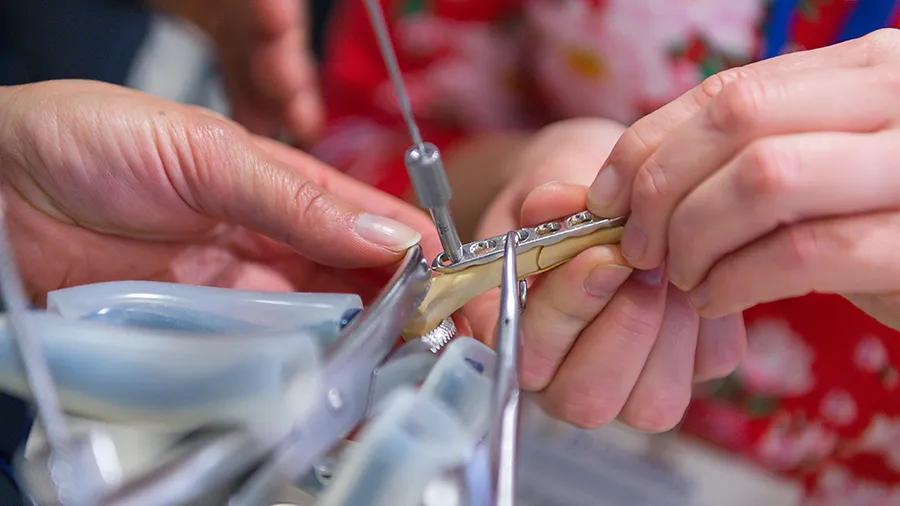Tibial crest osteotomy to the dog distal femur
1. Indications
This approach provides excellent visualization of the articular surface of the femoral condyles and allows access for implant placement on the lateral and medial side. It may be necessary for complex 33-C fractures.
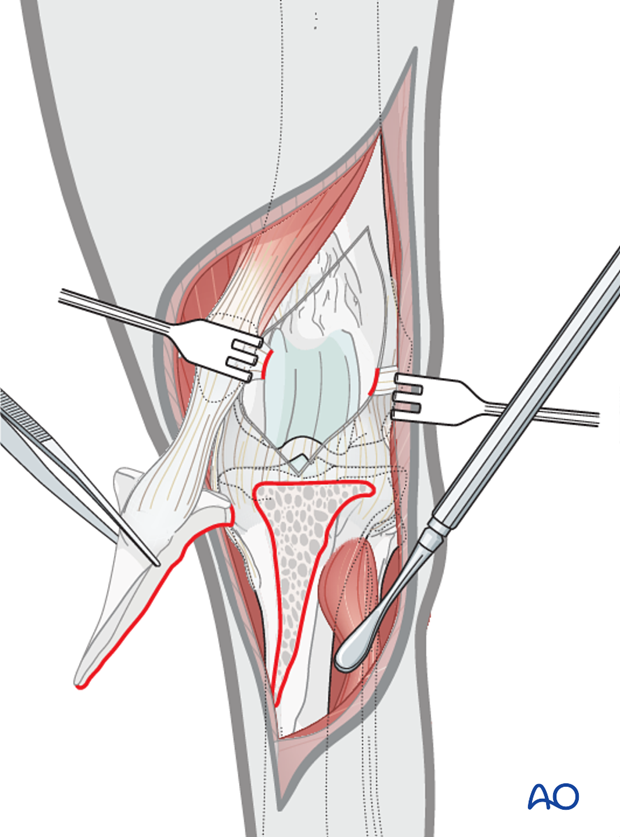
2. Anatomy
Key anatomic landmarks to be identified prior to the surgical approach include:
- Patellar tendon
- Long digital extensor tendon
- Collateral ligaments
- Articular surface
- Tibial tuberosity
- Tibial crest
Depending on the fracture type, these landmarks may be displaced. Care should be taken to identify and avoid damage to them during the approach.

3. Skin incision
Only one parapatellar (either lateral or medial) skin incision is made. The incision may need to be extended distally to gain good exposure of the tibial crest.
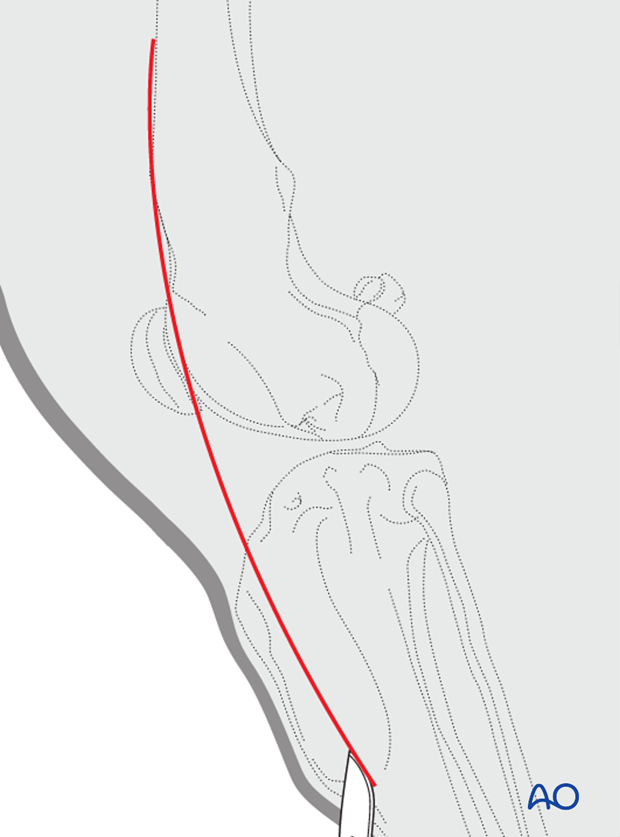
4. Exposure
The subcutaneous tissues are incised along the same line and retracted.
The lateral fascia is incised cranial to the biceps muscle. The incision is extended distally across the stifle joint 2-3 mm lateral to the patellar tendon.
The biceps fascia is retracted caudally.
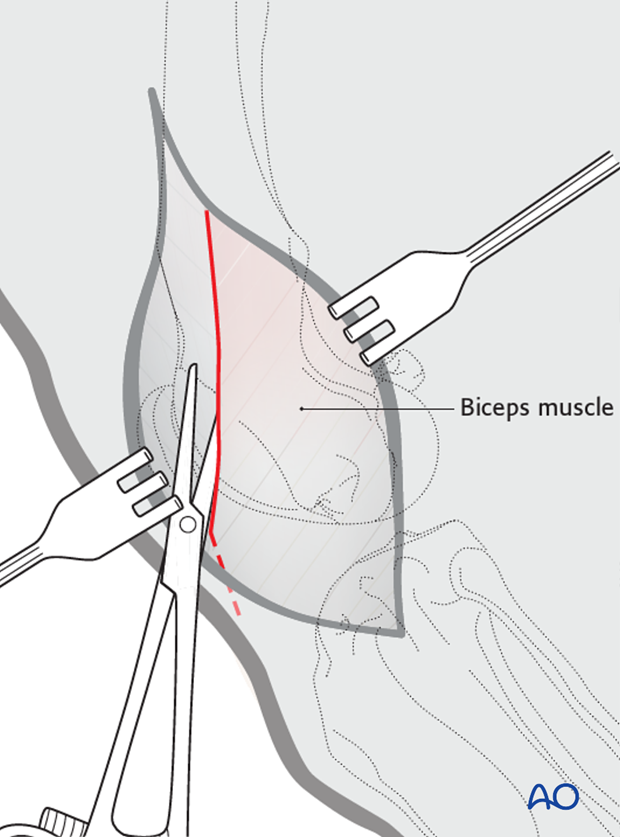
Separation between the biceps fascia and the vastus lateralis muscle is necessary proximally. A branch of the caudal femoral artery lies in this region; it may need to be cauterized or ligated.
A stab incision is made into the joint capsule adjacent the patella. The incision is extended proximally and distally using scissors.
Note: Grasp and tent the joint capsule with forceps prior to the stab incision to allow more room between the scalpel blade and articular cartilage. Care must be taken to protect the tendon of the long digital extensor while making the incision.
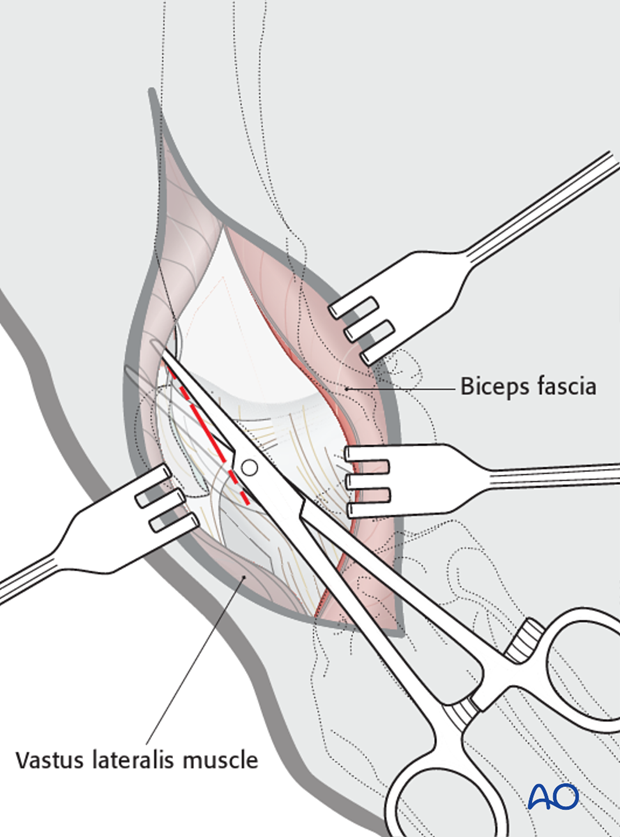
With the stifle in extension the patella is luxated medially for exposure of the articular surfaces.
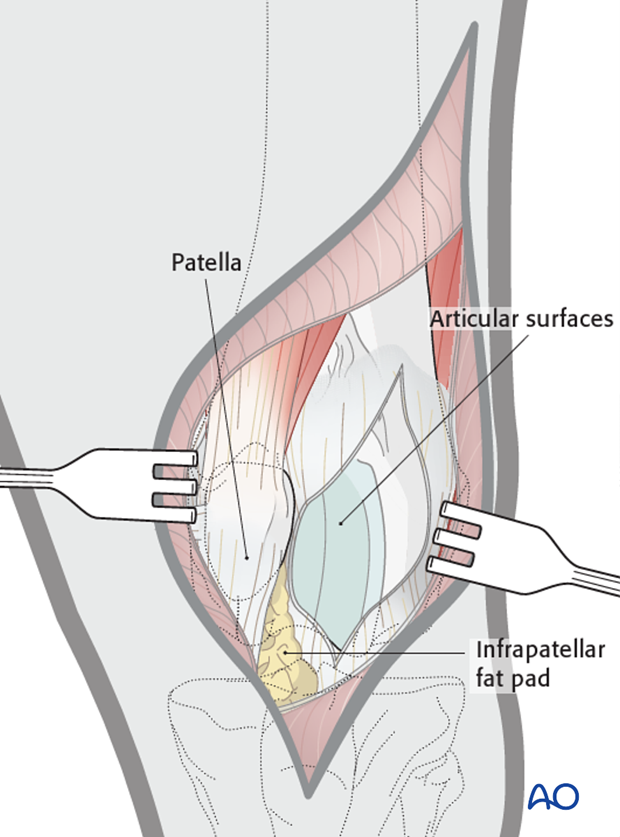
Osteotomy
An incision on the fascia is made over the tibial crest.
The cranial tibial muscle is reflected caudally to avoid damage during the osteotomy.
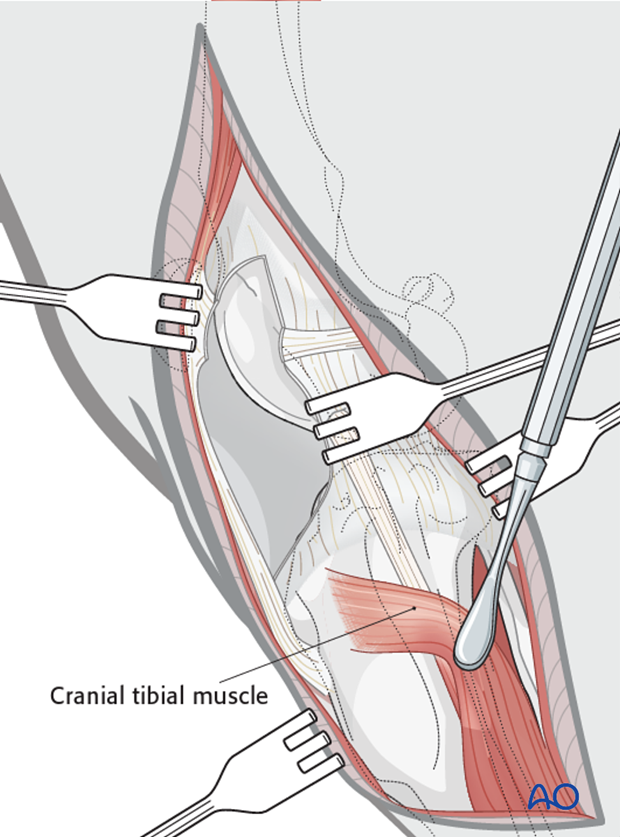
An osteotome or oscillating saw can be used to create an osteotomy of the tibial crest.
Note: The tibial fragment must be repaired with a pin and tension band after osteotomy; therefore, ensure it is an adequate size.
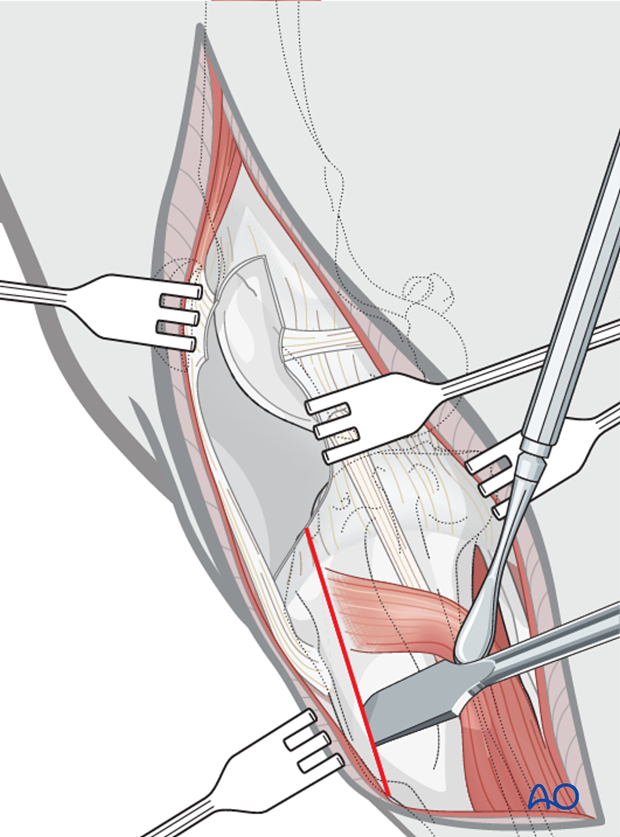
Intraoperative picture of an osteotomy of the tibial crest, performed with an osteotome and mallet.
A periosteal elevator is used to retract the cranial tibial muscle.
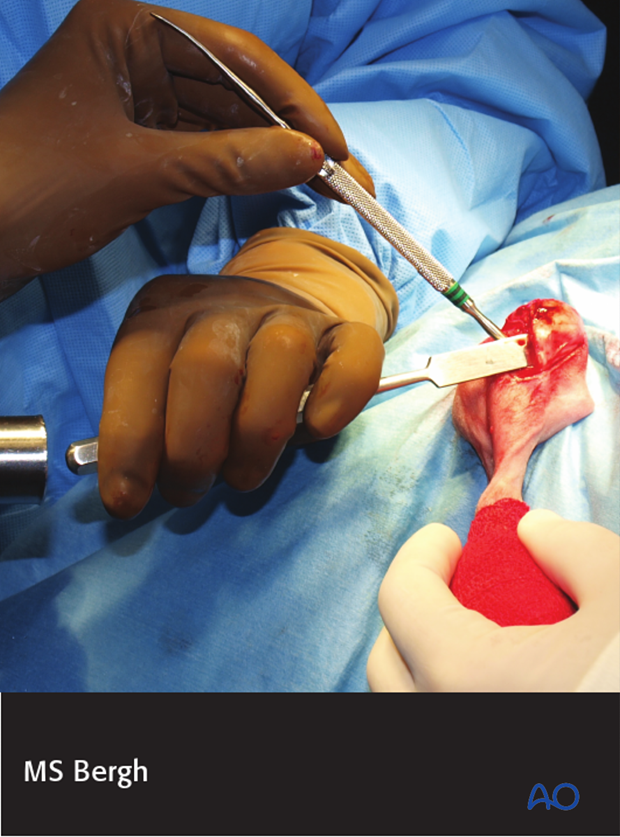
The tibial crest is reflected proximally for exposure of the intraarticular structures.
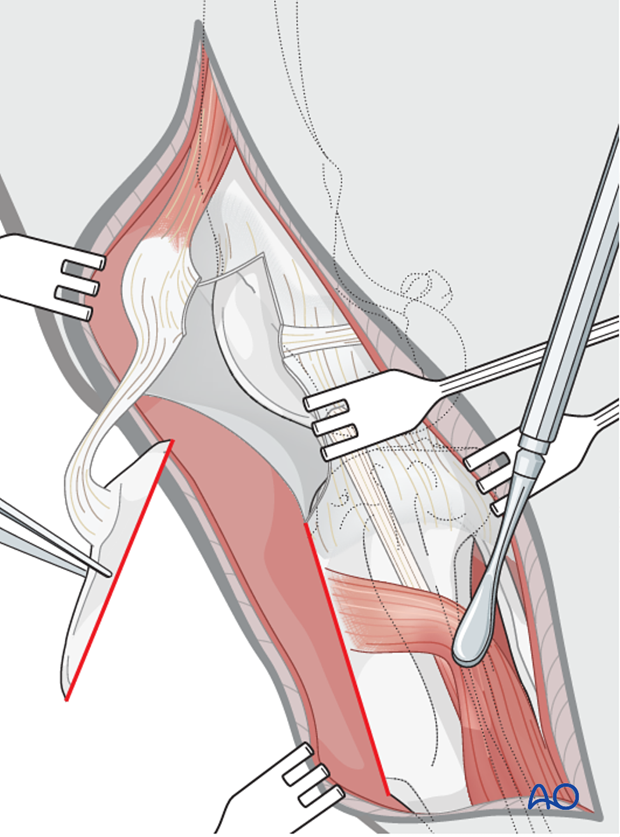
The tibial crest osteotomy provides excellent visualization of the articular surface of the femoral condyles and allows access on the lateral and medial side, as shown in the intraoperative picture.
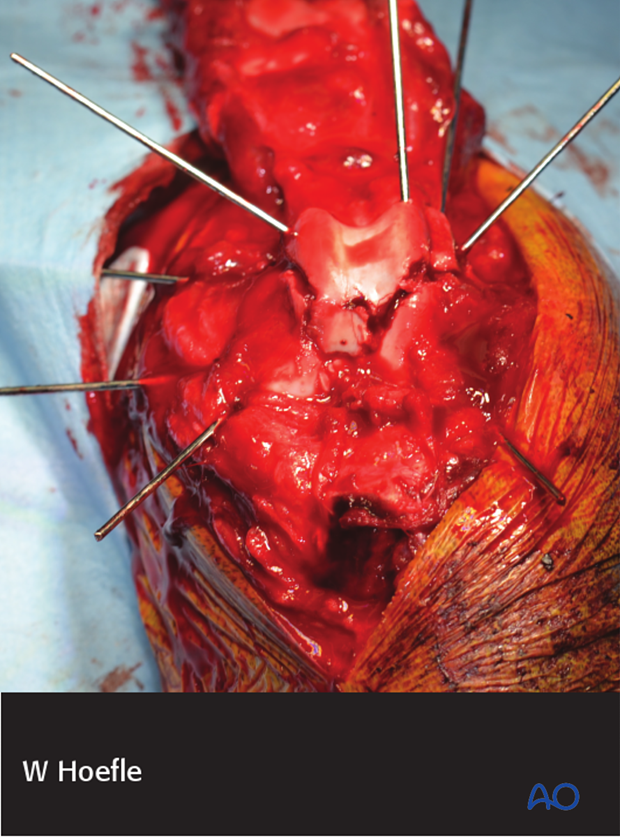
5. Closure
The tibial crest is reduced to its anatomic position and stabilized with a pin and tension band technique.
The joint capsule is closed using interrupted sutures. The fascia is closed in an appositional pattern. Subcutis and skin are routinely closed.

